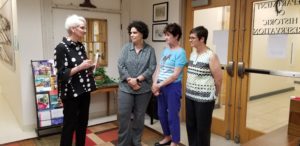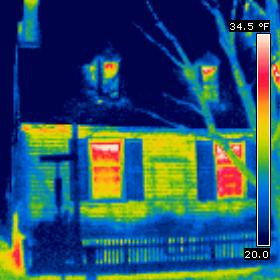To the UMW campus community:
Greetings. As many of you may know, President Troy Paino created the Campus Environment Presidential Ad Hoc Committee (CE) in September of 2017 and appointed me as chair. The committee was established at the request of the UMW Board of Visitors and from a recommendation by the Diversity and Inclusion Task Force. The impetus behind the creation of this committee was to ensure that UMW was conveying itself visually to students, faculty, staff, and visitors in a manner coinciding with our commitment to a diverse, inclusive, and welcoming environment. With this in mind, the CE Committee was charged with the following;
“…conducting an audit of the public displays of history and culture in the campus common areas, including academic and administration buildings and residence halls, and to make recommendations where appropriate. The committee’s goal is to recognize and preserve the school’s history while also updating and contextualizing displays to reflect the changes in our student body and to create a fully welcoming environment for all students, faculty, and staff. The committee is also charged with making sure that the physical environments on our campuses more generally reflect our commitment to diversity and inclusion.”
During the past two years, the 10-member Committee – made up of students, faculty, alumni, and staff members – has identified and assessed 2,070 public displays at all three UMW campuses. This assessment included examining how each display represented ethnicity, sexual orientation, and gender, as well as broader subject classifications associated with content. Once compiled, this data was analyzed in conjunction with the campus history of UMW. We engaged in a two-phase process: quantitative and qualitative, and we have combined the findings into one 71-page draft report.
This work has been important, revealing, and sometimes painful. We are striving to be proactive in examining our past with an eye toward current values and what will best serve the institution in the future. Our process has been deliberative, diligent, and detailed. Our draft findings are based on scholarly research, and our report includes protocols, methodology, and a glossary.
Before presenting our findings to President Paino and the Board of Visitors at its November 2019 meeting, we seek input from all members of the campus community. To that end, we will hold two open campus forums:
Monday, October, 28, 10:30 a.m. – 12:30 p.m., HCC Digital Auditorium
Wednesday, October 30, 3:30 – 5:30 p.m., HCC Digital Auditorium
Please plan to attend one of both forums. Your feedback is critical. It will help us develop a more complete picture of what is needed to ensure a diverse, inclusive, and ultimately welcoming campus for all. The Committee’s summarized recommendations below are a first step towards this objective. Please be sure and read more detailed descriptions of each recommendation in the “Recommendations” section of the attached draft document.
If you are unable to attend a forum, a comment form is available at https://www.umw.edu/diversity/campus-environment-feedback/.
1 Year Recommendations (2019-2020):
- Publish the Campus Environment Presidential Ad Hoc Committee report and disseminate to the entire campus community.
- Hold discussions with Residence Life to create a “tool kit” for displays used in lobbies of residence halls.
- Work with university stakeholders to audit temporary, periodic, and or non-historical communications and displays (transitional, underutilized, promotional, digital and third party) and develop guidelines to ensure they reflect the University’s values and commitment to diversity and inclusion.
- Develop a series of helpful guidelines and resources to assist various departments.
- Identify ownership and location of transitional and underutilized displays.
- Audit internal promotional literature during regular replacement schedules.
- Audit digital displays during regular updating schedules.
- Audit third party display materials during regular updating schedules.
- Locate and remove any inaccurate or outdated histories associated with the institution on UMW-sponsored web pages.
1-5 Year Recommendations (2019-2024):
- Create a standing committee to assist in the development of temporary and permanent displays on the University of Mary Washington’s three campuses.
- The committee recommends that the historic Schnellock murals in Monroe and George Washington Halls are contextualized through interpretative signage as well as an on-line presence which describes in detail the murals content and context.
a. The condition of the murals in Monroe Hall depicting the Virginia founding fathers should be evaluated. Reversible concealment should be explored as an option.
- Conserve the deteriorating murals for future interpretation.
- When last assessed the cost of restoring the murals was prohibitive and therefore it is not recommended that resources be spent on this process at present time.
- Provide the opportunity for new and inclusive murals focused on UMW as it exists today.
- Concealment of representations such as Robert E. Lee in George Washington Hall.
- The creation of protocols to assess and address existing building names on campus is necessary and should work in conjunction with the Named Gift Policy (G.2.2) already in place.
- Reinstitute the full names associated with campus buildings.
- Brief building namesake biographies should be written and made readily available online for UMW community members to read. Such information should also seek to contextualize the history.
- Disseminate accurate campus histories that focus on untold aspects of the institution’s history.
- Gradually update more permanent photographic displays relating to the University of Mary Washington’s history with the addition of more recent photographs conveying the composition of the current student body.
- Audit, assess, and research those University of Mary Washington properties not part of this study including Belmont (Gari Melchers Studio), Brompton, and the James Monroe Museum.
- Create and fund a focused on-line image and document repository for University of Mary Washington information regarding diversity and inclusion that can be used for display creation.
- Trinkle Hall should be renamed as the values the name embodies run contrary to the University’s ASPIRE document and the University’s mission as a whole.
Recommendations Implemented on an “as needed basis”:
- Consideration must be given to ethnic diversity, gender, and sexual diversity when naming options become available to address the lack of diversity in building name selection on UMW campuses.
- Strong consideration must be given to naming buildings after people of under-represented groups with strong connections to the UMW community.
- Installation of new murals and artwork throughout campus representing UMW today and reflecting the UMW communities ASPIRE values.
In closing, I would like to offer heartfelt thanks to the volunteer members of the CE Committee:
- Jazmin Andrews ’19, Student, Theatre
- Dr. Erin Devlin, Assistant Professor, History and American Studies
- Dr. Steve Hanna, Professor, Geography
- Elizabeth “Gracie” Hardy ’19, Student, Historic Preservation
- Dr. Venitta McCall, Professor, College of Education
- Dr. Cedric Rucker ’81, Associate Vice President & Dean of Student Life
- Mark Thaden ’02, Executive Director of Alumni Relations
- Dr. Laura Wilson, Assistant Professor and Director of Safe Zone, Psychological Science
- Susan Worrell, Special Assistant to the President for University Events
Sincerely,
Michael Spencer ’03, Associate Professor, Historic Preservation
Committee Chair



